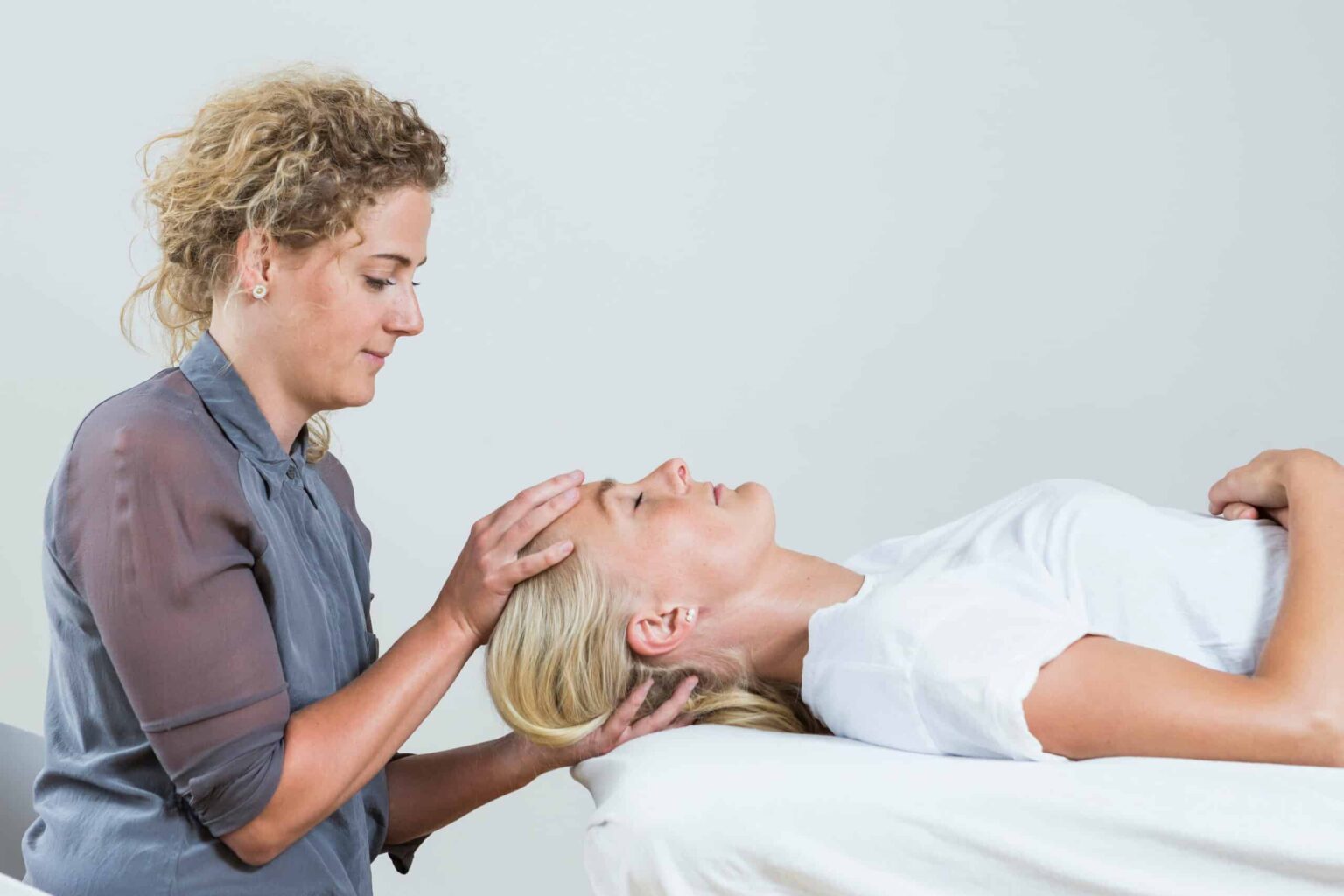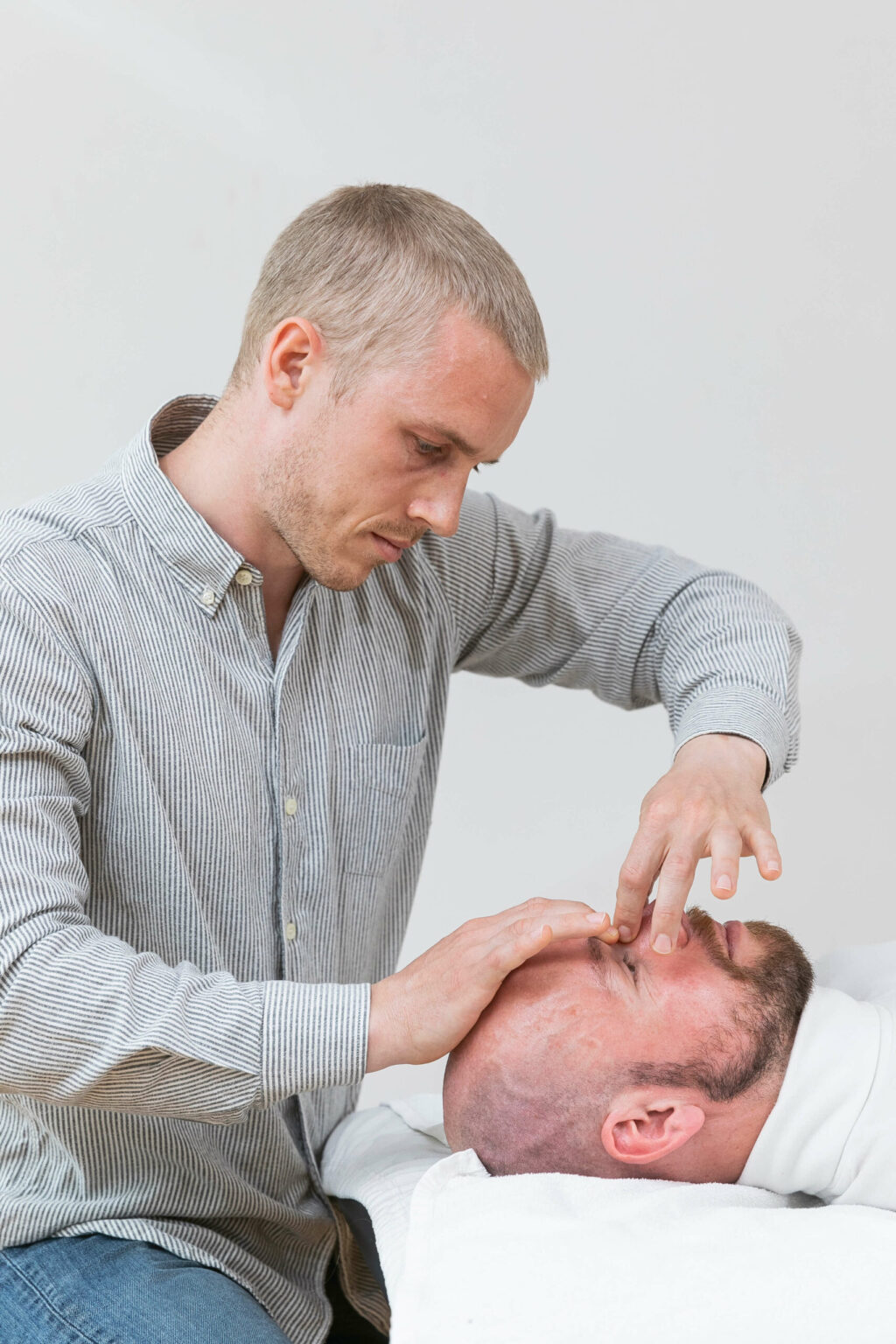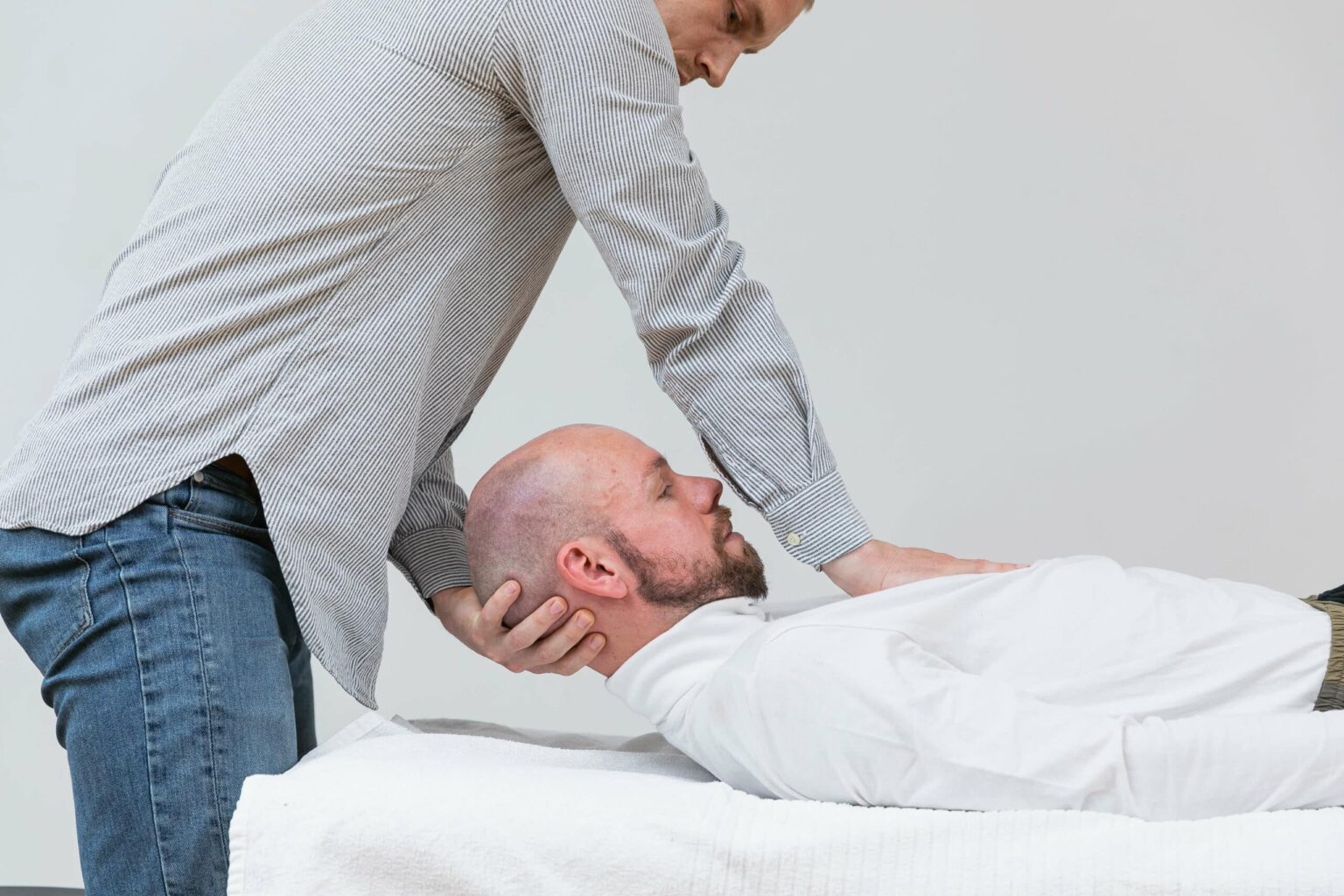We treat
Jaw pain & temporomandibular joint functions
Learn more about jaw pain & temporomandibular joint functions on this subpage.
The jaw joint
The temporomandibular joint is a synovial joint that consists of two bones (the temporal and mandibular bones), a joint capsule, synovial fluid, cartilage and a disc. When the temporomandibular joint is opened, first a rotation and then a forward sliding occurs. The joint is stabilized by the joint capsule and disc as well as muscles and connective tissue. The joint is controlled by nerves that originate from the fifth cranial nerve, the trigeminal nerve. This nerve also supplies facial muscles, skin, nose, eyes etc.
Jump to section [Vis]
Frequent jaw problems
Lockjaw (jaw joint locking) often occurs when the disc has become stuck in the front or back of the jaw joint. Symptoms may include the jaw joint being locked in an open position (inability to close the jaw) or the jaw joint being locked in a closed position (inability to open the jaw).
The reason is that the disc gets stuck and prevents rotation and sliding in the joint.
Jaw Grinds or clicks/cracks – this is a symptom that the jaw joint is not moving as it should (rotation, sliding) and thus the joint is wearing out incorrectly. This causes, among other things, pain in the jaw, osteoarthritis in the jaw joint, headaches, migraines, pain in the jaw (jaw pain).
There are many different causes for the symptoms, but the most common are tense and tight jaw muscles, a tense jaw, unstable jaw joints and neck problems.
Crooked bite (biting crookedly/incorrectly) – when the jaw joint moves incorrectly, it can start to grind, click and crack.
The cause may be over-tensioned muscles on one side, pull from connective tissue and muscles coming from further down in the body, neck problems, etc. A crooked bite can cause problems with biting together (bite problems), tension in the jaw, crooked jaw, etc.

The effect of the jaw joint on the body
The temporomandibular joint has a major influence on the rest of the body, both mechanically and neurologically.
The human body is covered in connective tissue (fascia), which runs in various lines throughout the body. These lines are also connected to and affect the temporomandibular joint. Therefore, problems in, for example, the lower extremities can affect the temporomandibular joint.
The trigeminal nerve, which supplies the temporomandibular joint, operates from some of the same locations in the neck and skull as other cranial nerves, so problems in the jaw can affect the function of these nerves and vice versa.
Temporomandibular joint problems can also be associated with emotional, traumatic and psychological problems, as the muscles in and around the temporomandibular joint are related to the autonomic nervous system. The temporomandibular joint is also sensitive to stress.
The temporomandibular joint and the trigeminal nerve have a special proprioceptive function that registers the position of the joint. This is of great importance for our balance and coordination. The trigeminal nerve is thus considered to be responsible for approximately 35% of the total proprioceptive function in the body, and jaw problems can therefore sometimes be part of the cause of, for example, sprains and ankle sprains.
Jaw pain comes in many forms
Jaw pain, crooked bite, crooked jaw, clicking in the jaw, locking jaw, tense jaw muscles, jaw joint grinding, stiff jaw, tinnitus, headache, migraine, toothache, neck pain, neck problems, dental problems.
There are many problems and symptoms that the temporomandibular joint can have and cause. Often, this can also be linked to other problems such as headaches, neck pain and dizziness.

Osteopathic approach to jaw pain
-
- To investigate whether the jaw is the cause of the pain or whether the pain has an underlying cause elsewhere in the body.
-
- To optimize tension in jaw muscles, increase blood circulation in the area and solve problems with nerves (skull and neck problems).
-
- To ensure optimal function and mobility in and around the jaw joint.

Often related injuries

Jaw joint pain

Brain hemorrhage

Post-traumatic headache

Sinusitis

Tinnitus

Vestibular dysfunction

Maxillary sinusitis

